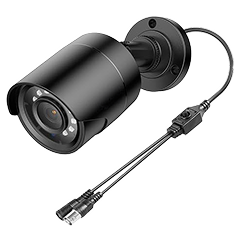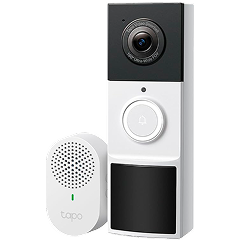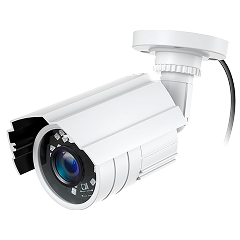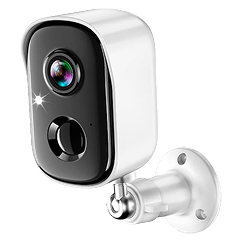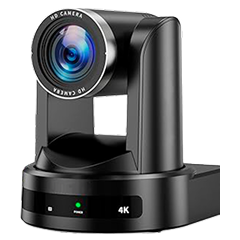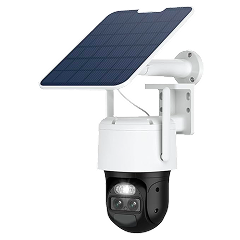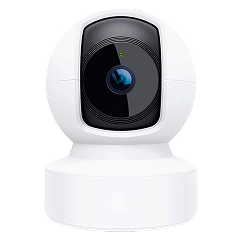Llevo tres años usando un Ring Doorbell Pro 2 junto con tres cámaras de seguridad Ring, y los timbres con cámara plantean retos únicos que la mayoría de los consejos sobre cámaras de vigilancia pasan totalmente por alto.
Como ingeniero que también tiene previsto actualizarse en el futuro al sistema UniFi, he aprendido mucho sobre los timbres con cámara. Esto incluye su funcionamiento como dispositivos de comunicación, vigilancia de paquetes y sistemas de gestión de visitantes, todo ello integrado en una unidad compacta que debe funcionar a la perfección cada vez que alguien se acerque a tu hogar.
Las limitaciones de emplazamiento y potencia, junto con requisitos de comunicación, hacen que la selección de un timbre con cámara sea completamente diferente a la elección de una cámara de seguridad estándar. No puedes instalarlos donde quieras para obtener una cobertura óptima; deben funcionar desde esa ubicación específica del timbre, hacer frente al tráfico diario constante y proporcionar una comunicación bidireccional clara, al tiempo que identifican rostros a una distancia de entre 1 y 5 metros, así como los paquetes que recibes en la puerta de tu casa. Mi Ring Pro 2 me enseñó lo que realmente importa en los timbres con cámara reales, que es diferente de lo que destacan las fichas técnicas.
Calidad de vídeo y resolución para cobertura de puerta principal
Las especificaciones de vídeo que importan para cámaras de vídeo difieren completamente de lo que tú priorizarías para la vigilancia general porque quieres identificar paquetes y personas concretas a distancias predecibles.
Requisitos de resolución para identificación de paquetes y visitantes.
Así es como se comportan realmente las diferentes resoluciones a distancias típicas de timbres, basándome en mis pruebas con el Ring Pro 2 y en investigaciones sobre modelos 4K:
Mi Ring Pro 2 a 1080 p resuelve el 90% de mis necesidades: puedo identificar a los repartidores (y a los posibles ladrones de paquetes), leer las etiquetas de los paquetes cuando se colocan cerca de la puerta y ver claramente los rostros hasta una distancia de unos 4,5 metros.
El salto a 4K suena muy atractivo, hasta que te das cuenta de que agota la batería y satura tu ancho de banda de subida durante las horas punta de la tarde, cuando todo el mundo está viendo vídeos en streaming. Si no necesitas leer texto pequeño en paquetes situados al otro lado del porche o identificar personas a distancias mucho mayores que las habituales de los visitantes, 1080 p ofrece un gran nivel de detalle sin sacrificar el rendimiento de tu red.
Optimización del campo de visión para el posicionamiento del timbre
Las cámaras para timbres necesitan campos de visión más amplios que las cámaras de seguridad normales porque no se puede ajustar la posición de montaje (salvo por una o dos cuñas para ajustar el ángulo), por lo que tendrás que conformarte con usar el lugar donde tengas el cableado del timbre. El campo de visión horizontal de 150 grados de mi Ring Pro 2 cubre todo mi porche y el camino de acceso, pero todo lo situado más allá de los 120 grados se distorsiona tanto en los bordes que los rostros se vuelven irreconocibles.
El punto óptimo parece estar entre 140 y 160 grados para la mayoría de las instalaciones de timbres, ya que ofrece una buena cobertura de la zona de entrega de paquetes sin convertir a los visitantes en imágenes distorsionadas de feria.
Calidad y rendimiento de la visión nocturna
El rendimiento de la visión nocturna es lo que distingue las cámaras de timbre decentes de las inservibles, ya que la mayoría de las entregas de paquetes, visitas inesperadas e incidentes de seguridad ocurren después del anochecer. Mi Ring Pro 2 usa LED infrarrojos estándar que iluminan eficazmente unos 4,5 metros.
Basta para identificar a los repartidores, pero no tiene potencia suficiente para leer las etiquetas de los paquetes pequeños en completa oscuridad. La visión nocturna en color queda muy bien en las demostraciones, hasta que te das cuenta de que necesita la luz del porche o las farolas cercanas para funcionar correctamente. Sin iluminación ambiental, volverás al infrarrojo normal, así que no pagues más por una característica que no va a funcionar cuando más la necesitas.
El emplazamiento de los LED es siempre más importante que su cantidad. Mi Ring Pro 2 tiene LED repartidos alrededor de la carcasa de la lente para ofrecer una cobertura decente en toda la zona del porche. He probado modelos en los que los fabricantes habían agrupado todos los LED en un solo lado.
Esto crea sombras extrañas que ocultan la mitad del rostro de los visitantes. Incluso con un buen emplazamiento de los LED, mantengo la luz del porche encendida durante las horas nocturnas porque la diferencia en la calidad del reconocimiento facial es como el día y la noche. Los sistemas de IR más nuevos con detección de personas mediante IA ayudan a limpiar las imágenes granuladas, pero sigues teniendo una calidad de imagen infrarroja intrínsecamente limitada.
Funciones de audio y comunicación bidireccionales
La calidad del audio es lo que distingue las cámaras de timbre verdaderamente útiles del fracaso de algunos interfonos caros. A las empresas les encanta hablar de sus altavoces y micrófonos, pero la comunicación en exteriores presenta retos que las pruebas en interiores nunca revelan.
Calidad de audio para las indicaciones para paquetes y disuasión
La cancelación de ruido con audio full dúplex cambia por completo las interacciones con los visitantes. Puedes mantener conversaciones normales en lugar de esos incómodos intercambios tipo walkie-talkie en los que todo el mundo habla al mismo tiempo. Mi Ring Pro 2 utiliza semidúplex, así que me quedo esperando a que los repartidores terminen de hablar antes de poder darles instrucciones sobre dónde dejar los paquetes.
Esto ralentiza la comunicación y puede llegar a ser molesto. Cuando hay alguien a varios metros de tu puerta, necesitas un altavoz con suficiente volumen para que se oiga por encima del ruido ambiental. Además, muchos timbres con cámara suenan amortiguados cuando intentas comunicarte desde el interior de tu casa.
Funciones de respuesta inteligente y grabaciones previas al inicio
Los mensajes de respuesta rápida resuelven situaciones habituales relacionadas con la entrega de paquetes, pero apenas los utilizo en mi sistema Ring porque hablar directamente con los repartidores me da mejores resultados. Las opciones pregrabadas parecen impersonales y, de todos modos, los repartidores suelen ignorarlas.
La grabación previa al inicio resulta mucho más valiosa. Captura esos segundos previos al inicio del movimiento, mostrando el contexto completo de la aproximación de una persona, en lugar de captarla solo en pleno movimiento. Esto ayuda a distinguir entre alguien que está vigilando tu propiedad y un visitante desorientado que busca los números de las casas.
Detección inteligente y funciones de IA
Recibir alertas útiles en lugar de notificaciones basura depende totalmente de lo bien que la IA de la cámara gestione el caos de la actividad en la puerta principal. Tu puerta principal es testigo de una actividad constante que volvería loca a una cámara de seguridad normal. Las furgonetas de Amazon, los deportistas, los niños en bicicleta y el tráfico urbano activan las alertas.
Precisión en la detección de personas, paquetes y vehículos
La moderna detección por IA, que distingue entre personas, paquetes, vehículos y animales, supera con creces a la detección de movimiento básica de los timbres. La detección de personas de mi Ring Pro 2 funciona correctamente durante el día, pero tiene problemas por la noche, ya que a veces confunde a los mapaches con personas y no detecta a los visitantes reales cuando se acercan desde ángulos extraños.
El sistema rara vez pasa por alto los vehículos de reparto o las personas que se acercan directamente a la puerta, pero a veces se activa con los automóviles que pasan por la calle, a pesar de la configuración de la zona de movimiento. Esto ocurre quizás una vez por semana, frente a las docenas de alertas diarias que recibía con los sistemas básicos de detección de movimiento.
Zonas de movimiento y controles de privacidad
Me llevó meses configurar correctamente la zona de movimiento: estas cámaras lo ven todo, desde la entrada de tu casa hasta la calle, por lo que hay que buscar constantemente el equilibrio entre la cobertura de seguridad y el consumo de batería. Las zonas de privacidad no son elementos opcionales, sino requisitos legales, ya que las cámaras de los timbres inevitablemente capturan las entradas de los vecinos, las aceras y otras propiedades que no tienes por qué grabar. Las consideraciones clave para la configuración de movimiento del timbre incluyen, entre otras, las siguientes:
- Excluir el tráfico de la calle — Los vehículos que pasan por delante te agotarán la batería con grabaciones constantes
- Cubrir las zonas de entrega de paquetes — deberá incluir todo el porche y los puntos de entrega más comunes
- Bloquear espacios de los vecinos — Usa las zonas de privacidad para evitar grabar propiedades adyacentes
- Adaptarse a día/noche — La sensibilidad al movimiento necesita diferentes ajustes para la luz diurna y la luz infrarroja
- Tener en cuenta los cambios estacionales — Las ramas de los árboles y las decoraciones festivas afectan a las zonas de detección
La gestión inteligente de notificaciones se adapta a las rutinas diarias mejor de lo que me esperaba. Por ejemplo, mi sistema Ring cambia automáticamente al modo «hogar» cuando mi teléfono se conecta al wifi, lo que reduce las alertas de movimiento en interiores cuando estoy en casa.
Soluciones de alimentación y requisitos de instalación
La forma en que se alimenta la cámara del timbre influye en la dificultad de la instalación, el mantenimiento periódico y los costes a largo plazo. A diferencia de las cámaras de seguridad normales, que se pueden colocar en cualquier lugar con buen acceso a la corriente eléctrica, la mayoría de las cámaras para timbres deben colocarse donde se encuentra el timbre existente para que funcionen con el sistema de timbre interior.
Opciones flexibles de soluciones de alimentación
En el mundo real, el rendimiento de la alimentación se desglosa del siguiente modo:
Mi Ring Pro 2 se conecta al cableado del timbre que ya tenía, lo que me ofrece alimentación constante después de haber verificado la compatibilidad del voltaje. Algunos vecinos necesitaron que un electricista les actualizara sus viejos transformadores, pero mi sistema de 16 V funcionó bien. Los modelos que solo funcionan con batería parecen prácticos hasta que tienes que subirte a una escalera cada pocos meses para recargar la cámara.
La batería del timbre de mi vecina se agota periódicamente en invierno y deja su casa sin timbre hasta que se acuerda de solucionarlo. Los sistemas híbridos tienen un coste inicial más elevado, pero evitan la complejidad del cableado y los problemas de recarga.
Complejidad de la instalación e integración del timbre
El cableado existente del timbre suele ser adecuado, pero las viviendas antiguas presentan dificultades que convierten una instalación sencilla en una visita del electricista. La instalación de mi Ring me llevó 30 minutos porque tenía un cableado estándar de 16 V, pero unos amigos míos que viven en casas de los años 60 descubrieron que sus antiguos transformadores no soportaban los requisitos de alimentación de las cámaras modernas.
La compatibilidad con Chime varía enormemente. Algunas cámaras funcionan con los timbres mecánicos o digitales que ya tienes, mientras que otras te obligan a desconectarlos y a usar sustitutos inalámbricos o notificaciones del teléfono.
Resistencia a la intemperie y durabilidad
Las clasificaciones IP no indican prácticamente nada sobre la durabilidad real de los timbres con cámara, ya que la ubicación del montaje y el nivel de exposición son más importantes que los números que aparecen en la caja. Mi Ring Pro 2 tiene una clasificación IP65 y está colocado bajo un pequeño saliente del tejado, donde ha sobrevivido a tres inviernos y tres veranos sin problemas.
Sin embargo, he visto fallar cámaras con clasificación IP67 cuando se instalan expuestas directamente a la intemperie en porches abiertos. Los factores clave para la durabilidad del timbre incluyen:
- Protección del emplazamiento — Incluso un ligero saliente del tejado mejora considerablemente la durabilidad.
- Temperaturas extremas — El frío estropea las baterías más rápido; el calor hace que las carcasas de plástico se vuelvan frágiles.
- Exposición directa al sol — La radiación UV puede degradar la carcasa de la cámara en 2-3 años.
- Vibración y viento — Las cámaras de timbre captan más viento que las unidades montadas en la pared.
- Problemas de condensación — Los climas húmedos provocan el empañamiento de las lentes, independientemente del índice IP que tengan.
La protección contra robos varía enormemente entre los distintos diseños de cámaras para timbres y es más importante de lo que la gente cree, ya que estos dispositivos se colocan justo al lado de la puerta principal, donde cualquiera puede examinarlos de cerca.
Mi Ring Pro 2 necesita un destornillador de seguridad para desmontarlo, lo que evita los robos oportunistas pero no disuade a nadie que disponga de herramientas básicas y cinco minutos libres. Algunos modelos incluyen soportes antirrobo que envían alertas de manipulación, mientras que otros utilizan sistemas de liberación rápida que priorizan la comodidad del usuario sobre la protección contra robos.
El rendimiento estacional fue constante durante todo el año. Mi timbre funciona perfectamente en primavera, verano, otoño e invierno, desde las noches invernales a -20 °C hasta los días veraniegos a más de 37 °C que tenemos en el norte de Indiana.
Opciones de almacenamiento y dependencia de la nube
La mayoría de las empresas de cámaras para timbres prefieren que contrates una suscripción mensual, porque es ahí donde realmente ganan dinero. Muchos propietarios se centran en el coste inicial de la cámara sin pensar en lo que gastarán en suscripciones a los tres años. Esta es la comparación entre el almacenamiento local y el almacenamiento en la nube:
Mi sistema Ring cuesta 10 € al mes para un número ilimitado de cámaras, lo que me pareció razonable hasta que calculé que me costaba 360 € al año por almacenar imágenes que rara vez reviso. Las subidas a la nube consumen más ancho de banda del publicitado porque las subidas fallidas se reintentan automáticamente, y mi conexión a Internet se ralentiza notablemente durante las horas punta de grabación, cuando varias cámaras suben datos simultáneamente.
El almacenamiento local es atractivo para las personas que desean tener el control, pero su configuración técnica intimida a la mayoría de los propietarios. El almacenamiento en tarjetas SD de los timbres con cámara resulta complicado, ya que las tarjetas están expuestas a temperaturas extremas y a la humedad, lo que puede provocar fallos.
La integración de NAS requiere conocimientos de configuración de redes que están fuera de la zona de confort de la mayoría de los propietarios. Los sistemas que dependen de la nube tienen una gran desventaja: si se pierde la conexión a Internet, se pierde todo. Un corte reciente de Internet durante seis horas convirtió mis cámaras en carísimos adornos que ni siquiera mostraban imágenes en directo.
Integración domótica y compatibilidad con el ecosistema
Los fabricantes de cámaras te enganchan a propósito en sus ecosistemas porque cambiar de marca más adelante significa empezar de cero con las apps, el almacenamiento y las conexiones de domótica. Mi timbre Ring funciona a la perfección con los dispositivos Alexa. Puedo ver transmisiones en directo en Echo Shows y recibo avisos cuando alguien llama a la puerta, pero he oído que es completamente inútil con Google Assistant o Apple HomeKit.
El encadenamiento al ecosistema de Ring se hizo evidente cuando empecé a planificar la actualización de UniFi y me di cuenta de que perdería toda la integración con mis rutinas existentes de Alexa y tendría que reconstruir todo desde cero.
Los problemas de compatibilidad de la plataforma van más allá de los asistentes de voz y afectan a los sistemas de domótica, donde Ring funciona bien con las integraciones básicas de Amazon, pero requiere soluciones alternativas para cualquier otra cosa. Algunos sistemas, como UniFi, funcionan con Home Assistant para automatizaciones complejas que la mayoría de la gente no querrá configurar.
Consideraciones sobre el presupuesto y análisis del coste total
El precio de venta de los timbres con cámara solo cuenta la mitad de la historia, ya que las cuotas de suscripción, los costes de instalación y los accesorios de repuesto se suman rápidamente a lo largo de los tres años de propiedad.
Mi Ring Pro 2 me costó inicialmente 250 €, pero con la suscripción mensual a la nube de 10 €, llevo gastados un total de 610 € en dos años, sin contar los 50 € que me costó el timbre inalámbrico que compré para el sótano ni los 30 € del kit de puntas de destornillador de seguridad. Los modelos con batería parecen más baratos hasta que se contabiliza el coste de las baterías de repuesto cada 18-24 meses, la compra de paneles solares y el tiempo dedicado a los ciclos de carga.
Las opciones sin suscripción, como Reolink o UniFi, tienen un coste inicial más elevado (entre 400 y 500 € por prestaciones similares), pero la inversión se amortiza en 18 meses si tienes conocimientos técnicos. Basta con presupuestar otros 300-400 € para el almacenamiento NAS o el equipo de grabación de vídeo en red.
Errores comunes con los timbres con cámara y lecciones aprendidas
Estos son los errores que me costaron tiempo, dinero o cobertura de seguridad durante los dos años que utilicé Ring Pro 2:
- Montaje demasiado alto para el reconocimiento facial — Inicialmente lo instalé a la altura estándar de un timbre (120 cm), pero los rostros se distorsionan en ángulos pronunciados, por lo que una altura de entre 105 y 110 cm funciona mejor para la identificación.
- La intensidad de la señal wifi es importante en la ubicación del timbre — Mi puerta principal se encuentra en el límite del alcance de mi router, lo que provocaba desconexiones aleatorias hasta que añadí un punto de acceso wifi en el garaje (cerca de la puerta principal).
- Ajustar la sensibilidad al movimiento requiere paciencia — Yo la puse al máximo, pensando que más alertas suponían mayor seguridad, y luego tuve que soportar más de 40 notificaciones diarias a causa de sombras y vehículos que pasaban, hasta que acabé ignorando totalmente la app.
- Suponer que el almacenamiento en la nube siempre estaría accesible — Durante una interrupción de Internet de seis horas, me di cuenta de que mi timbre era completamente inútil, ya que no podía grabar localmente ni mostrar transmisiones en directo sin conexión a la nube.
- Subestimar las variaciones estacionales en el consumo de batería — Los amigos que tienen timbres con batería planifican el mantenimiento en función del consumo en verano, y después se encuentran con cámaras sin batería en invierno, cuando el frío duplica el consumo de energía.
- Omitir la configuración de la zona de movimiento — Dejé la configuración predeterminada durante el primer mes y vi cómo la batería del Ring se agotaba a la semana por culpa del tráfico de la calle, hasta que aprendí a excluir la carretera de las zonas de detección.
Cómo elegir el mejor timbre con cámara
Elige un timbre con cámara que se ajuste a tus habilidades técnicas y a tu presupuesto real, ignorando la publicidad exagerada sobre las funciones premium. ¿Una instalación sencilla con cuotas mensuales? Los sistemas Ring o Nest funcionan con fiabilidad sin necesidad de grandes conocimientos técnicos y se integran perfectamente en sus ecosistemas.
¿Estás dispuesto a aprender configuración de redes para obtener un mayor rendimiento a largo plazo? Marcas como Reolink o UniFi ofrecen un control de privacidad superior y un ahorro de gastos, pero prepárate para dedicar los fines de semana a aprender a usar el almacenamiento NAS y la administración de redes.
Empieza con menos funciones de las que crees que necesitas, prueba la cámara en tu entorno específico durante unos meses y luego decide si compensa mejorarla. Mi Ring Pro 2 me enseñó que una resolución de 1080 p, una detección de movimiento fiable y un sonido bidireccional decente cubren el 90% de las necesidades reales de un timbre con cámara para no quedarte sin red y sin cartera.
Las sofisticadas funciones de IA y el vídeo 4K parecen impresionantes hasta que te das cuenta de que una grabación nítida de alguien robando tus paquetes es más importante que contar cuántos píxeles tiene su rostro.


